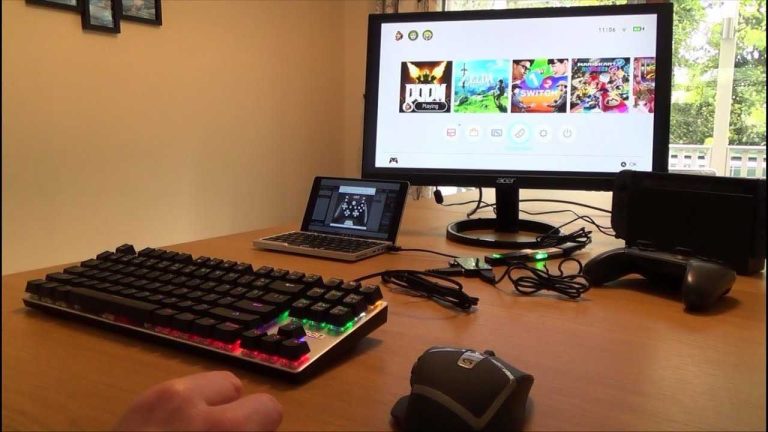Quick tip: Use spell check tools and practice regularly to significantly reduce typing errors. Paying attention to your mistakes and editing carefully can make a big difference.
Fixing common typing mistakes is straightforward once you identify the typical errors and adopt simple strategies. Regular practice, utilizing spell checkers, and slowing down slightly during typing can help you type more accurately. These small adjustments not only improve your speed but also boost your confidence in producing error-free writing.
Typing quickly and accurately is an essential skill, especially with the amount of digital communication we do daily. Many people struggle with frequent mistakes like misspelled words, typos, and punctuation errors. Fortunately, these issues are easy to fix with some mindful techniques. Whether you’re a student, professional, or casual typer, mastering simple habits will help you produce cleaner, more polished text every time.
How to fix common typing mistakes
Typing mistakes happen to everyone, whether you’re a beginner or someone who types daily. These errors can slow you down and make your writing less clear. Luckily, many simple solutions can help you improve your typing accuracy and speed. In this section, we will explore effective ways to fix common typing mistakes and become a more confident typer.
Understanding the most common typing mistakes
Before fixing mistakes, it’s good to know what they are. Common errors include misspelling words, hitting the wrong keys, spacing errors, and inconsistent typing speed. Recognizing these issues helps you target specific areas for improvement.
Some typical mistakes include:
- Missed Letters: Forgetting to press certain keys or skipping letters.
- Incorrect Letters: Hitting nearby keys by mistake, leading to typos like “teh” instead of “the.”
- Repetition Errors: Typing the same letter or word twice unintentionally.
- Spacing Mistakes: Putting too many or too few spaces between words and punctuation.
- Wrong Finger Placement: Using the wrong fingers or not keeping your fingers on the home row.
Perfecting your finger placement and posture
Good finger placement is the foundation for accurate typing. Start by placing your fingers on the home row keys: A, S, D, F for the left hand and J, K, L, ; for the right hand. Keep your thumbs resting on the spacebar.
Maintain proper posture to avoid fatigue and errors. Sit straight with your feet flat on the floor and elbows close to your sides. Keep your wrists slightly elevated above the keyboard, not resting on it, and look straight at your screen.
Tips for better posture and finger placement
- Use ergonomic chairs and keyboards to reduce strain.
- Regularly stretch your fingers and hands to prevent stiffness.
- Practice keeping your wrists in a neutral position while typing.
Practicing touch typing
Touch typing means typing without looking at the keys. This skill greatly reduces mistakes because your fingers memorize key positions. Dedicate time each day to practice this method to improve accuracy and speed.
Use online tutorials or typing software that guides you through lessons. Focus on accuracy first, then slowly increase your speed once you become comfortable. Remember, deliberate practice creates lasting habits.
Effective touch typing exercises
- Start with simple exercises that focus on individual fingers and keys.
- Progress to typing common words and phrases without looking at the keyboard.
- Use timed tests to measure your progress and set goals.
Utilizing technology to minimize errors
Modern tools can detect and correct mistakes as you type. Enable spell check options in your word processor or browser. Use grammar and style tools to identify common errors and suggest corrections.
Installing typing software that provides real-time feedback helps you recognize mistakes early. Additionally, employing keyboard overlays or stickers indicating key positions can improve muscle memory.
Helpful tools for improving typing accuracy
- Spell check and grammar correction plugins like Grammarly.
- Typing practice websites such as TypeRacer or Keybr.
- Keyboard overlays with labeled keys for beginners.
Building speed and reducing mistakes through consistent practice
Regular practice is essential for decreasing errors. Set aside a few minutes daily to focus on accuracy drills. As you get better, gradually increase your typing speed while maintaining accuracy.
Track your progress using online tests. Celebrate milestones like reaching a specific words-per-minute (WPM) rate with fewer errors. Consistency helps solidify proper typing habits.
Sample practice routines for error reduction
- Warm-up with simple drills focusing on correct finger placement.
- Practice typing passages or sentences with challenging words.
- Review errors after each session to identify problem areas.
Correcting specific mistakes systematically
Identify the errors you make most often and create targeted exercises. For example, if you frequently misspell “their” as “thier,” focus on practicing that word. This focus improves both your accuracy and confidence over time.
Always proofread your work and use editing tools to catch persistent mistakes. Over time, your muscle memory will correct most errors without conscious effort.
Strategies for addressing recurring errors
- Maintain a mistake log to track frequent errors.
- Repeat practice exercises for problem words or patterns.
- Slow down your typing speed temporarily to focus on accuracy.
Practicing with real-world typing tasks
Engage in typing activities that mimic daily writing tasks. Write emails, summaries, or stories to apply your skills practically. Real-world practice helps solidify proper techniques and reduces errors in everyday use.
Set goals to type a specific amount of content daily. Use tools that provide feedback on errors, and try to correct these mistakes in subsequent rounds. The more you type authentically, the more natural correct habits become.
Maintaining motivation and progress tracking
Stay motivated by setting achievable goals and rewarding yourself for improvement. Use progress charts or apps to visualize your performance. Recognizing even small improvements encourages consistency.
Join online typing communities to share tips and challenges. Social motivation helps you stick to your practice routine and reduces frustration from setbacks.
Summary of key strategies to fix common typing mistakes
To reduce errors and improve accuracy, focus on proper finger placement, consistent practice, leveraging technology, and systematic correction of errors. Remember, patience and perseverance are vital for long-term success. Keep practicing mindfully, and you’ll see your typing become more precise and speedy over time.
How To Fix Typing Mistakes With The Autocorrect Options Available in Microsoft Word?
Frequently Asked Questions
What are effective ways to quickly correct typos while typing?
To correct typos efficiently, use the backspace and delete keys to remove errors promptly. Enable spell check features in your word processor or browser to catch mistakes automatically. Practicing touch typing can also help reduce errors by increasing your accuracy and speed.
How can I prevent common spelling errors from recurring?
Learn the typical patterns that lead to mistakes, such as confusing similar-sounding words, and focus on those areas. Use tools with autocorrect options or custom dictionaries to catch frequent errors. Reading your text aloud can also help identify mistakes before finalizing your work.
What steps should I take if I notice repeated punctuation or spacing issues?
Review your keyboard shortcuts and settings in your text editor to avoid accidental character insertions. Pay attention to your typing rhythm to prevent extra spaces or misplaced punctuation. Using formatting tools like find-and-replace can help correct these issues after you finish writing.
How can I improve my accuracy to reduce typing mistakes over time?
Practice regularly with typing programs or exercises designed to increase precision. Focus on proper finger placement and avoid looking at the keyboard. Taking breaks during long typing sessions can also prevent fatigue, which often leads to more errors.
Final Thoughts
How to fix common typing mistakes is straightforward with consistent practice and attention to detail. Proofread your work carefully to catch errors early. Use tools like spell checkers to identify frequent mistakes and correct them promptly. Developing good typing habits and staying focused helps reduce errors and improves overall accuracy.
I’m passionate about hardware, especially laptops, monitors, and home office gear. I share reviews and practical advice to help readers choose the right devices and get the best performance.






